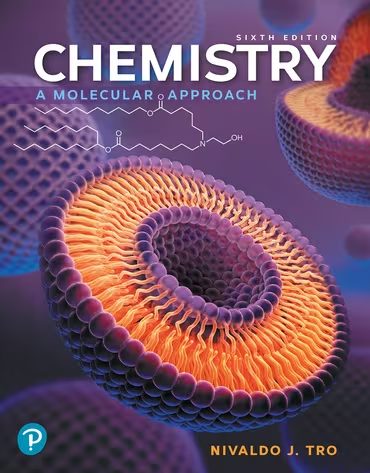Treatment of gold metal with BrF3 and KF produces Br2 and KAuF4, a salt of gold. Identify the oxidizing agent and the reducing agent in this reaction.

A solution contains one or more of the following ions: Hg22+, Ba2+, and Fe2+. When you add potassium chloride to the solution, a precipitate forms. The precipitate is filtered off, and you add potassium sulfate to the remaining solution, producing no precipitate. When you add potassium carbonate to the remaining solution, a precipitate forms. Write net ionic equations for the formation of each of the precipitates observed.
 Verified step by step guidance
Verified step by step guidance
Verified video answer for a similar problem:
Key Concepts
Solubility Rules

Precipitation Reactions

Net Ionic Equations

A solution contains one or more of the following ions: Ag+ , Ca2+ , and Cu2+ . When you add sodium chloride to the solution, no precipitate forms. When you add sodium sulfate to the solution, a white precipitate forms. You filter off the precipitate and add sodium carbonate to the remaining solution, producing another precipitate. Write net ionic equations for the formation of each of the precipitates observed.
A solution contains one or more of the following ions: Hg22+ , Ba2+ , and Fe2+ . When you add potassium chloride to the solution, a precipitate forms. The precipitate is filtered off, and you add potassium sulfate to the remaining solution, producing no precipitate. When you add potassium carbonate to the remaining solution, a precipitate forms. Which ions were present in the original solution?
A hydrochloric acid solution will neutralize a sodium hydroxide solution. Look at the molecular views showing one beaker of HCl and four beakers of NaOH. Which NaOH beaker will just neutralize the HCl beaker? Begin by writing a balanced chemical equation for the neutralization reaction.
